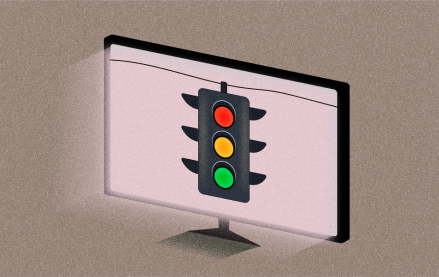Digiday+ Research: Publishers pull back their dependence on digital revenue

This research is based on unique data collected from our proprietary audience of publisher, agency, brand and tech insiders. It’s available to Digiday+ members. More from the series →
Interested in sharing your perspectives on the media and marketing industries? Join the Digiday research panel.
Publishers have always had a love/hate relationship with digital transformation. It’s given them more ways than ever to reach readers and potential subscribers, while at the same time it’s brought on challenges related to site traffic and AI.
Perhaps that’s why, after a year in which publishers shifted their revenue dependence away from traditional channels and toward digital channels, 2025 has seen a shift back toward more of a balance between traditional and digital revenue sources.
That’s according to a Digiday+ Research survey of more than 50 publisher professionals conducted in the second quarter of this year.
Digiday’s survey found a big year-over-year difference in how much publishers depend on traditional channels vs. digital channels for revenue. Last year, nearly two-thirds of publisher pros (64%) said their companies generated revenue mostly or entirely from digital channels. This year, that percentage fell to 51%.
On the flip side, just 13% of publishers said last year that they generate revenue mostly or entirely from traditional channels. This year, that percentage rose to nearly one-quarter (23% of respondents said this in 2025).
Looking at these year-over-year percentages, it seems as if publishers have gone through a real shift in where they’re getting their revenue. And, interestingly, this shift makes it appear as if publishers are moving away from a heavy dependence on digital channels data and toward more of a balance between digital and traditional channels.
But looking more closely at the data reveals that this year-over-year shift is actually more of a return to the norm for how publishers’ revenue is distributed between digital and traditional channels.
First of all, going back a bit further and breaking down Digiday’s survey data shows that the percentage of publishers who get their revenue entirely from traditional channels or entirely from digital channels has remained fairly steady over the last few years.
In 2022, 2% of publisher pros said their companies generate revenue entirely from traditional channels. In 2023, 5% said the same. Four percent said the same in 2024 and that percentage stayed the same into 2025. Meanwhile, 28% of publishers said in 2022 that their revenue came entirely from digital channels. Twenty-nine percent said the same in 2023, 24% said so in 2024 and 28% said so this year.
The percentage of publishers who rely equally on both traditional and digital revenue sources has also remained steady: In 2022, one-quarter of publisher pros said they generated revenue about equally from traditional and digital channels, 20% said the same in 2023, 23% said so in 2024 and this year 26% said their revenue is equally distributed between traditional and digital channels.
Last year, however, the percentage of publishers who said they get their revenue mostly from traditional channels took a significant dip, while the percentage who said their revenue comes mostly from digital channels saw a big jump. Eighteen percent of publishers said they got their revenue mostly from traditional channels in 2022, and 19% said the same in 2023. But in 2024, just 9% of publisher pros told Digiday traditional channels generated most of their revenue. At the same time, 27% of publishers said in both 2022 and 2023 that their companies generated revenue mostly from digital channels. In 2024, that percentage increased to 40%.
But both of those percentages normalized this year. In 2025, 19% of publishers said they get revenue mostly from traditional channels. And 23% said they get revenue mostly from digital channels.
It’s certainly interesting to see the pendulum swing one way and then the other in terms of where publishers are getting revenue. And it will be worth watching how this data changes as Gen Zers continue to get older. Speaking of which, stay tuned for future Digiday+ Research coverage of how Gen Z is consuming news.
More in Media

What publishers are wishing for this holiday season: End AI scraping and determine AI-powered audience value
Publishers want a fair, structured, regulated AI environment and they also want to define what the next decade of audience metrics looks like.

Media giant Essence launches a marketplace for Black women-led brands
Essence has launched WeLoveUs.shop, a new online marketplace dedicated to Black women-led brands.

In Graphic Detail: The state of AI referral traffic in 2025
The stats reveal a new audience pipeline forming outside of traditional search and social platforms.








